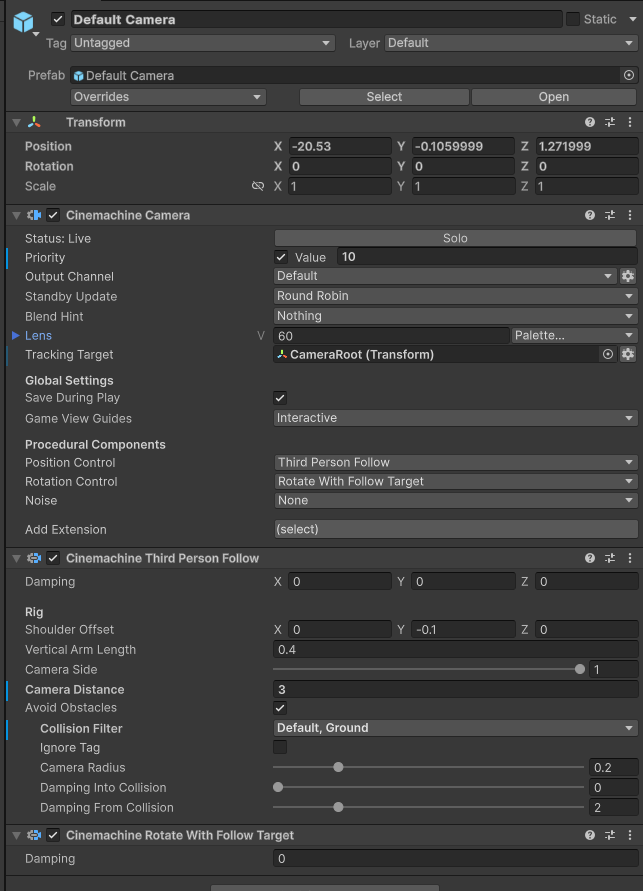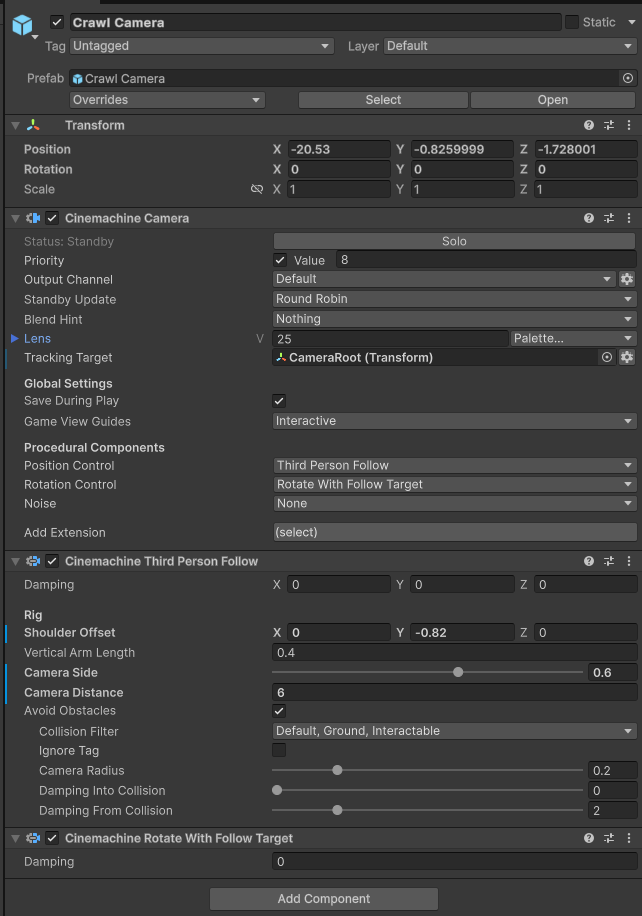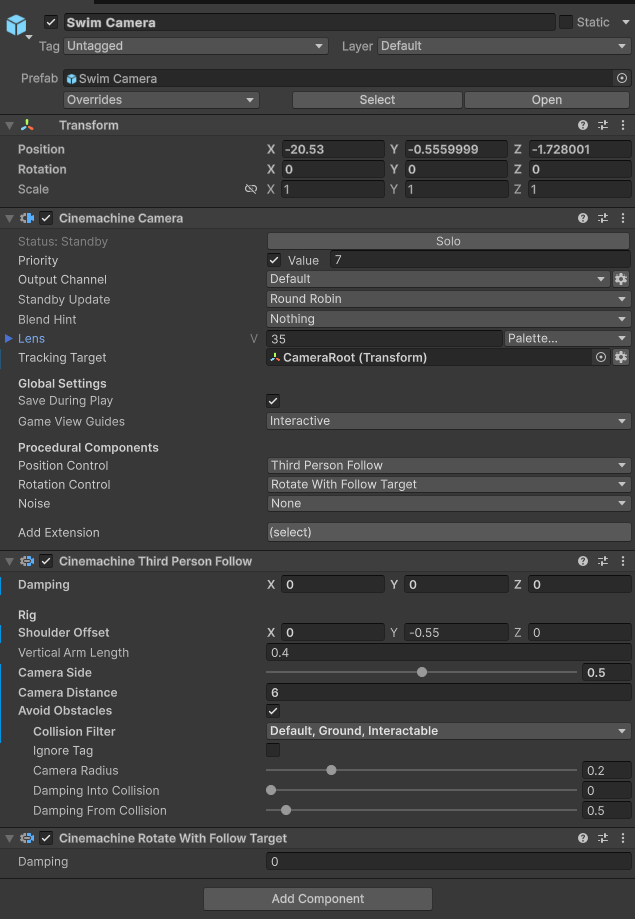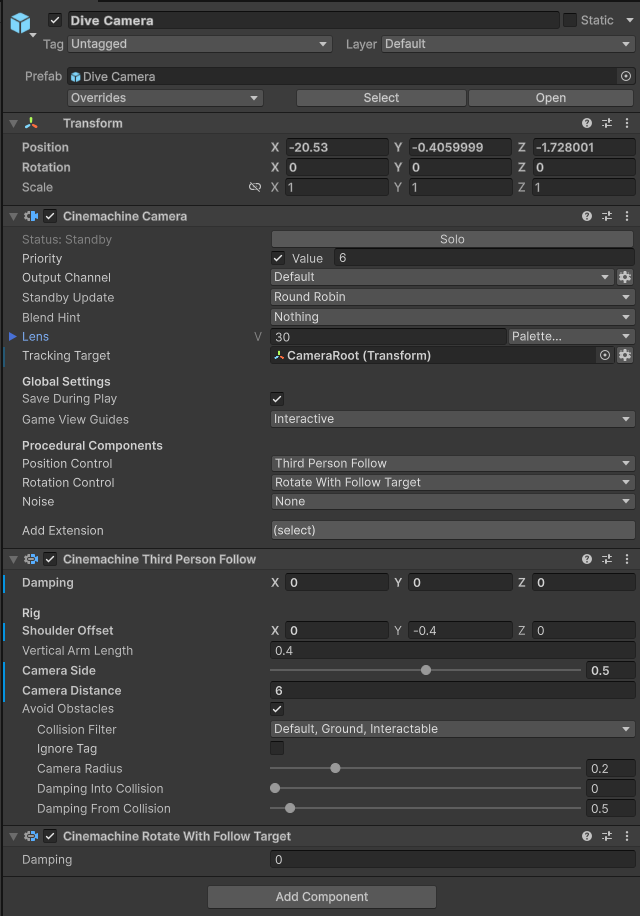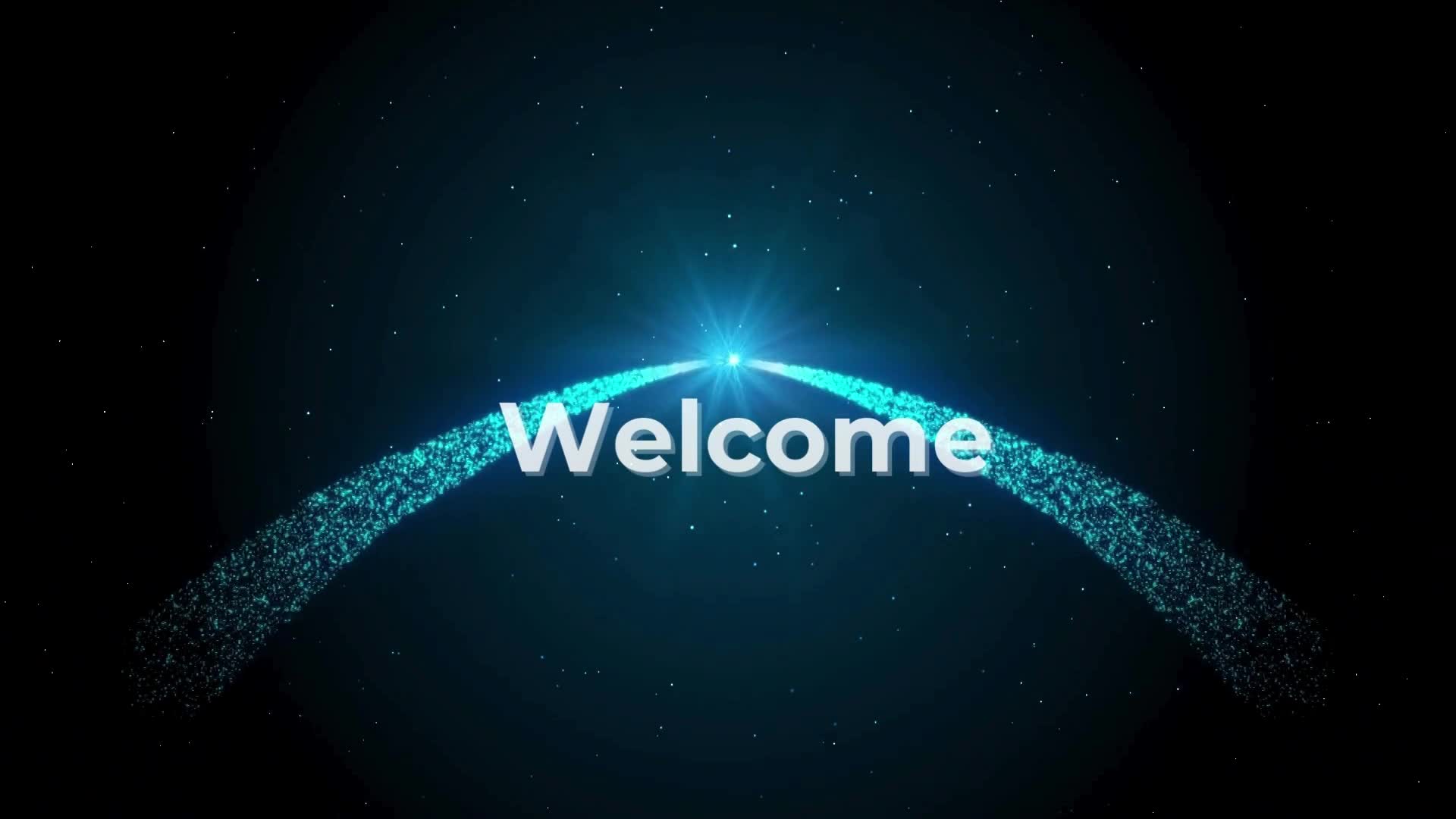Solving Camera Headaches: Smooth, Dynamic Third Person Views
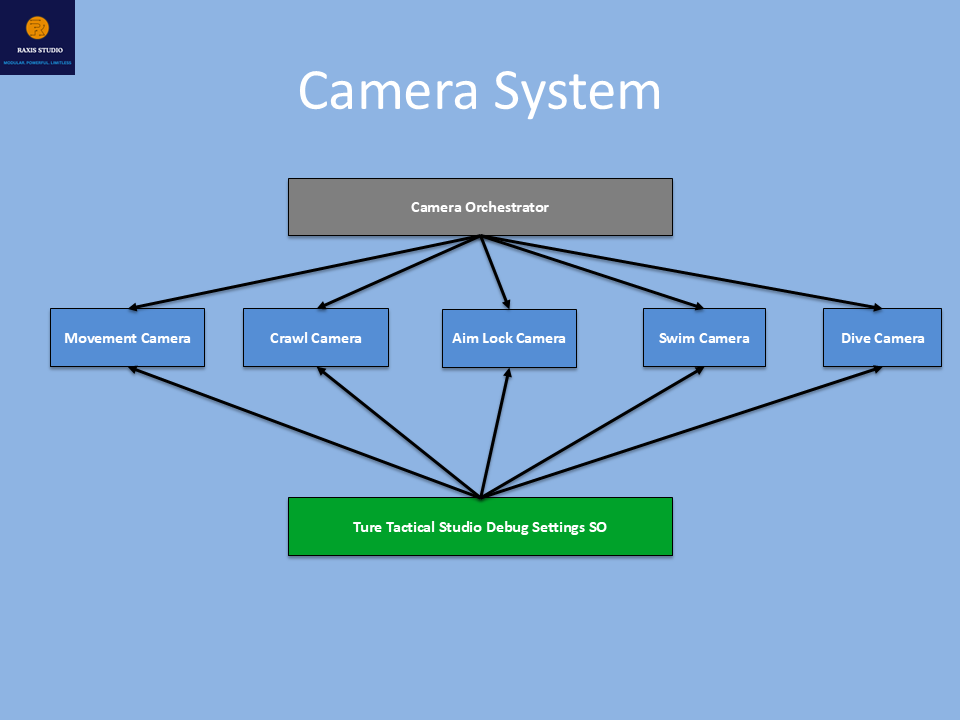
Intro: The Invisible System That Shapes Gameplay
A great camera is the difference between fluid immersion and constant frustration.
In third-person games, players notice instantly if the camera feels stiff, snaps at odd times, or fails to adapt to their actions. Yet developers often spend countless hours wiring Cinemachine setups, hand-tuning offsets, and fighting with transitions.
That’s why the Modular Third-Person Framework includes a fully integrated Camera System that adapts dynamically to movement states right out of the box.
The Challenge: Jitter, Snaps, and Wasted Time
Without a reliable camera system, developers face:
- Cameras clipping through walls or snapping unexpectedly.
- Awkward FOV changes when switching states (crawl vs. sprint vs. swim).
- Manually wiring multiple Cinemachine virtual cameras and transitions.
- Losing days of dev time just to keep the camera “feeling right.”
For solo devs and small teams, this is time stolen from designing the actual game.
The Solution – Camera System in the Framework
The framework’s Camera Orchestrator manages everything for you:
- State-aware cameras → transitions automatically between Idle, Strafe, Crawl, Swim, and Dive.
- Dynamic FOV adjustment → sprint zooms out for speed, crawl narrows for focus, swim adapts fluidly underwater.
- Inspector-driven controls → edit clamps, sensitivity, smoothing, and offsets directly in the Inspector.
- Seamless integration → camera swaps tied to the same state machine that drives locomotion and interactions.
No extra Cinemachine hacks. No spaghetti wiring. Just a camera that follows your gameplay.
Proof: A Camera That Works With You
Without the framework:
- Sprinting → FOV remains static, breaking the sense of speed.
- Diving → camera snaps awkwardly as you enter water.
- Crawling → perspective stays too high, killing immersion.
With the framework’s camera:
- FOV widens smoothly when sprinting.
- Diving transitions fluidly to a dedicated swim/dive camera.
- Crawling lowers the camera naturally to match the player’s posture.
Developer-Friendly by Design
The Camera System follows the same principles as the rest of the framework:
- Interface-driven → ICameraSystem defines contracts for camera states and transitions.
- Event-driven → responds to movement/interaction events without hard references.
- Factory + State Pattern → plugs directly into the Movement State Machine.
- ScriptableObjects → configure FOV ranges, clamps, offsets, and transition speeds without touching code.
- Debuggable → camera state logs can be toggled for runtime testing.
- Extensible → add new virtual cameras (combat aim, dialogue scenes) while reusing the same orchestration.
Use Cases
- Action games → sprint feels fast, cover feels tactical, swimming feels fluid.
- Stealth games → tighter FOV on crawl and strafe increases tension.
- Cinematic games → seamless state-aware transitions eliminate clunky cuts.
- Custom genres → extend the system for aiming, cutscenes, or special mechanics.
The Camera That Adapts to You
A camera shouldn’t be something you constantly fight with. It should just work adapting to movement states, environments, and player actions.
With the Modular Third-Person Framework, you get a camera system that delivers immersion and flexibility without extra setup.
👉 Get the Modular Third-Person Framework on the Unity Asset Store: Modular Third-Person Framework | Game Toolkits | Unity Asset Store


